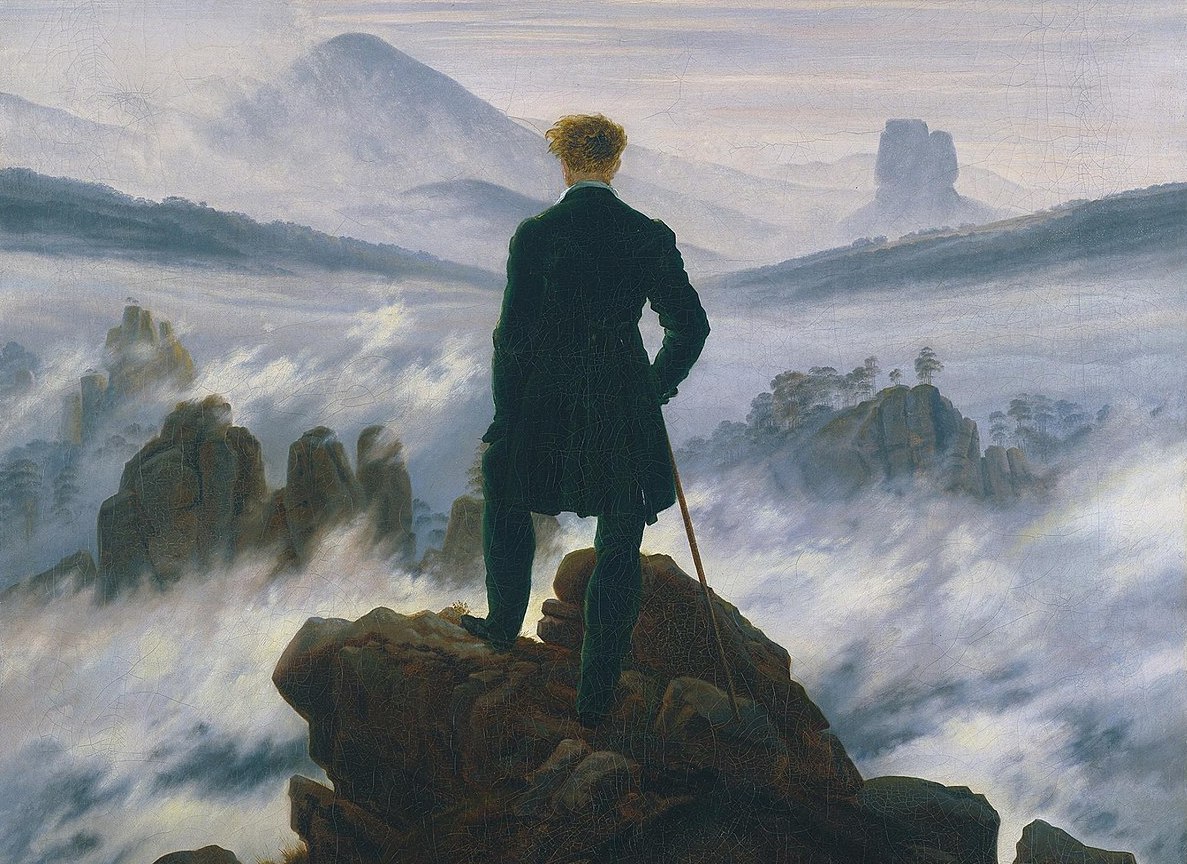“The work that has always communicated something important to me, ever since I first saw it, is The Wanderer Above the Sea of Fog by Caspar David Friedrich.
I love its Victorian optimism – even entrepreneurial – and its boldness. You can almost smell the fresh air and the dreams of the figure in the painting.
The person standing on a rocky outcrop, a wanderer, far from any vegetation and immersed in the mist, seems to be gazing at the sea and infinity. On one hand, there is the charm and contemplation of nature, and on the other, an attitude that is humble but, at the same time, proud and positive. The power of nature and the landscape do not crush the wanderer; in fact, it almost seems as if he becomes one with it and draws inspiration from it.
My favorite gallery in the world is Villa Borghese in Rome, for its fabulous sculptures by Bernini and its sense of grandeur and classicism. But right after that comes the Kunsthalle in Hamburg, and it was here that I saw Friedrich’s masterpiece.
For me, the value of art lies in its ability to create an emotional reaction that goes beyond aesthetics, and that increases the worth of a work. It speaks to you, it draws you in, and you feel connected to it.
The value of a work of art has an intrinsic value. The Wanderer Above the Sea of Fog immediately gave me a great sense of positivity, energy, and a drive to do things.
It is with this positive vision and this optimism that over the years I have been able to launch many successful art projects, some of which were innovative, such as Affordable Art Fair. And this positivity still accompanies me today.”
The Wanderer Above the Sea of Fog (in German Der Wanderer über dem Nebelmeer) is an oil painting by the German Romantic painter Caspar David Friedrich, created in 1818 and currently housed at the Hamburger Kunsthalle in Hamburg. For many, it is a manifesto of Romanticism (and it was already considered one at the time).
At the center of the composition, in the foreground, a solitary wanderer stands silhouetted against a rocky precipice, with his back to the observer. He has windblown, red hair, is wrapped in a dark green overcoat, and in his right hand, resting at his side, he holds a walking stick.
The heroic isolation of the wanderer becomes a journey of life and celebrates the omnipresent nature of God, a mixed state of awe and pleasure felt by humans when they become aware of the stunning grandeur of nature.
The Wanderer, with his back turned, allows for identification with the observer. However, he is not a passive viewer. Rather, he is a contemplative figure, and through his emotional experience, he reflects philosophically on his own nature and human existence in relation to the power of nature.
Biografia
WILL RAMSAY | Founder of Hong Kong Art Fair, Pulse, and Affordable Art Fair, of which he is also the CEO, now present in 10 cities worldwide. A visionary gallerist and entrepreneur, he revolutionized the approach to collecting, particularly targeting young collectors and emerging art. His family has served in the British Army and Royal Navy for five generations, and Will Ramsay followed suit, serving for five years after university.
He stated: “But what inspired me the most was the love for art and the idea of making it democratic. The 1980s were a period of economic optimism after decades of hardship, and people had more to spend. I wanted them to spend it on something beautiful.”
